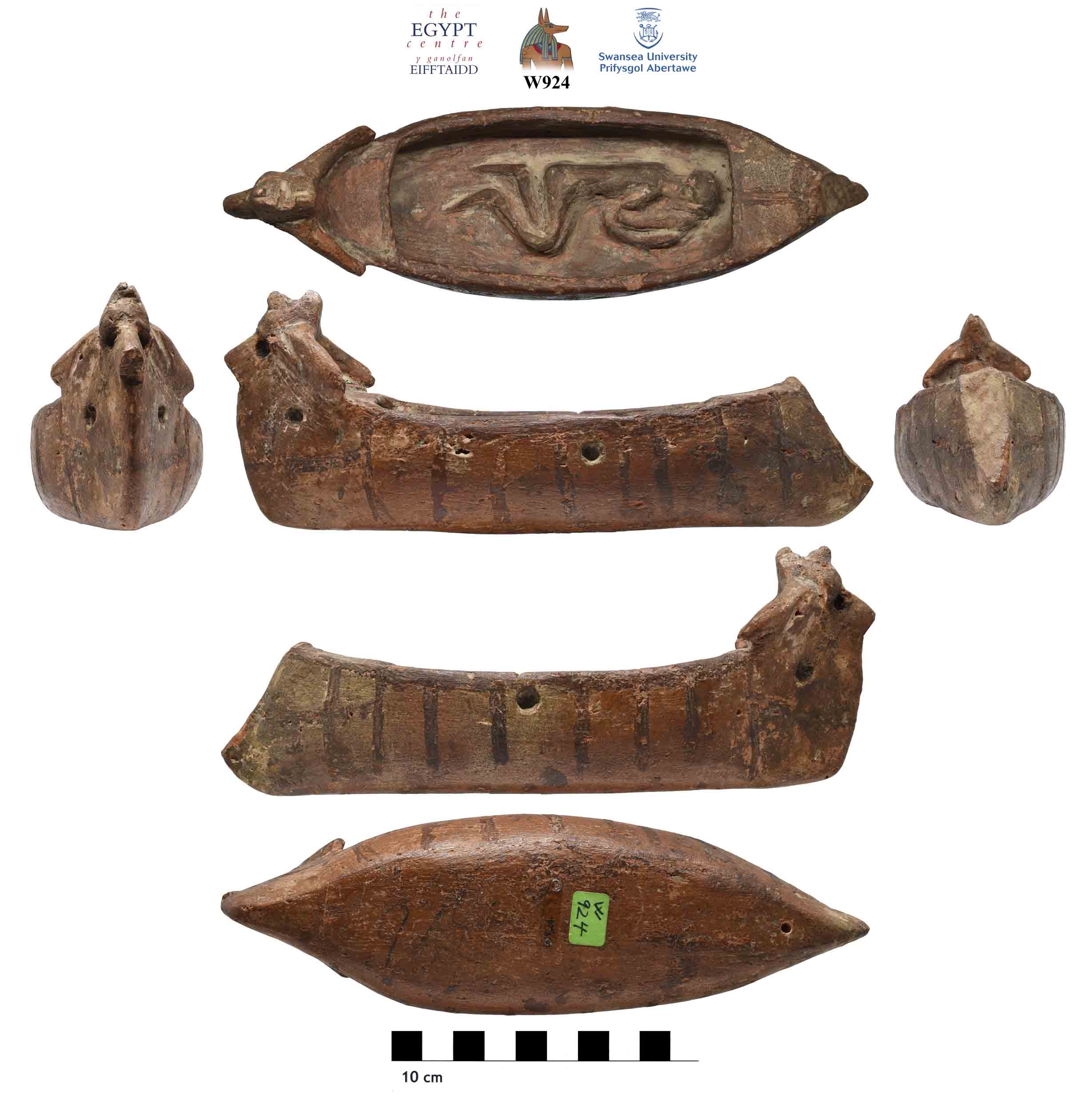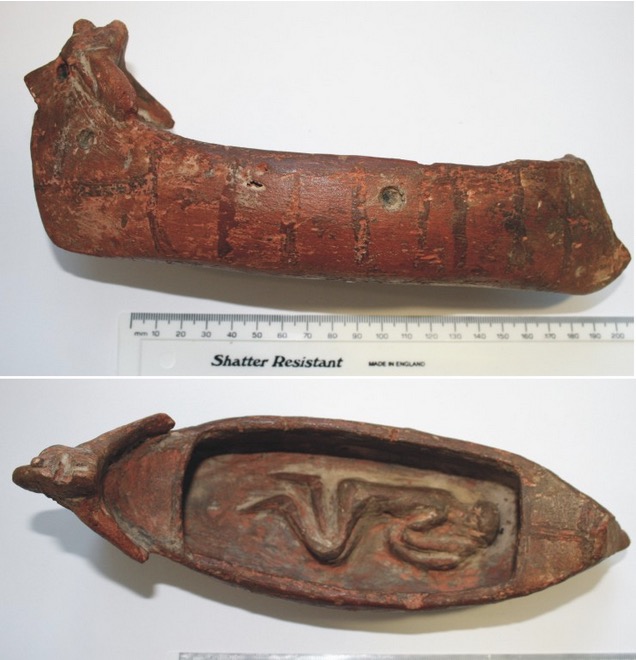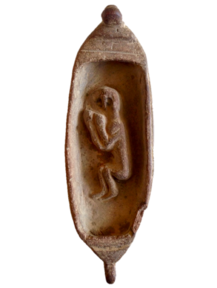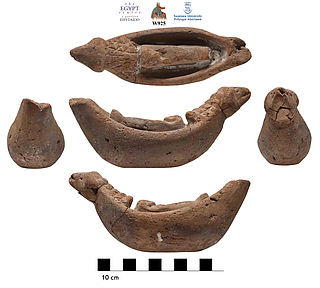Fake – boat model FAK-0014
By Vanhulle, Dorian
Archaeological site unknown
Swansea, The Egypt Centre, University of Swansea, W924.
Date : 19th–20th century AD
This model is one of the very few dubious examples to have undergone laboratory analysis to determine its authenticity. The Oxford Authentication Unit dated the boat to less than 150 years old. However, this is the date of the last firing: ithe boat itself may be genuine, with the figure added in modern times, likely to increase its monetary value. The most favourable context for the manufacture of this object is the end of the 19th century and the beginning of the 20th century, so when Predynastic archaeology was at its peak (c. 1890–1930).
Several arguments can be made against the production of models of boat containing a deceased person during the 4th millennium BC in Egypt. Funerary boats do not appear until the pharaonic period, particularly the Middle Kingdom in the context of the development of the Osirian religion. It is at this time that wooden models are developed, of which some are funerary boats loaded with a coffin. During the Predynastic period, the boat is never represented as a vehicle carrying the body of the deceased to the grave. Even in the Old Kingdom, not a single boat is shown carrying a corpse among their numerous representations on mastabas reliefs. They are often simple boats used for hunting and fishing, while in religious iconography, processional boats and well-known solar boats are depicted. Those painted on D-Ware vessels (Naqada IIC–D), which are generally found in tombs, never contain a deceased person, except on a few artefacts that are considered modern, forged decoration applied to genuine ceramics.
Material : Clay
Preservation : Almost complete
Preservation information :
The stern is damaged and partly broken.
Description
This boat model consists of a massive structure that has a prow decorated with a bovid head. The horns curve backwards and rest on the gunwale. The interior is hollowed out, and a figure is represented inside, moulded into the object. The hands brought to the mouth and the foetal position suggest that it is a deceased. The face, roughly made, is characterised by the presence of two oversized globular eyes.
This object belongs to a category of fake antiquities in which also appears the model kept in the Royal Museum of Art and History in Brussels. Although the prow of the examplar of Brussels is not decorated with an animal head, their dimensions are similar: the Swansea model is 23,3 cm long and 6.7 cm wide while the Brussels one is also 23 cm long and 7.7 cm wide. The 7.7 cm of the Brussels model represents the maximum width, which means that these two objects are almost identical in terms of volume. Similarly, they are both made from what appears to be the same dark red clay.The great similarity in the rendering of the deceased body inside the boat and in the manufacture of the central space in which it lays suggest that these two objects were produced by a same workshop/craftman.
Decoration
Red vertical strips are painted alongside the wall of the hull, on the exterior. Two pairs of perforations, two on each side and facing each others, were drilled in the wall of the hulls.
Dimensions (cm)
7.2
23.3
Additional information
References
1975
Drei altägyptische Totenboote und vorgeschichtliche Bestattungsgefässe (Negade II). Revue d'Égyptologie 27
, 46–49, pl. I.2011
Egyptian watercraft models from the Predynastic to Third Intermediate Periods. BAR International Series 2263. Oxford
, 422, no. B.8.2018
Faux et usage de faux: discussion autour d'un modèle de bateau des Musées royaux d'Art et d'Histoire de Bruxelles, in: Doyen, Florence, Preys, René; Quertinmont, Arnaud (eds), Sur le chemin du Mouseion d'Alexandrie: études offertes à Marie-Cécile Bruwier. Montpellier
, 306, 315, tab.1, fig. 7.




